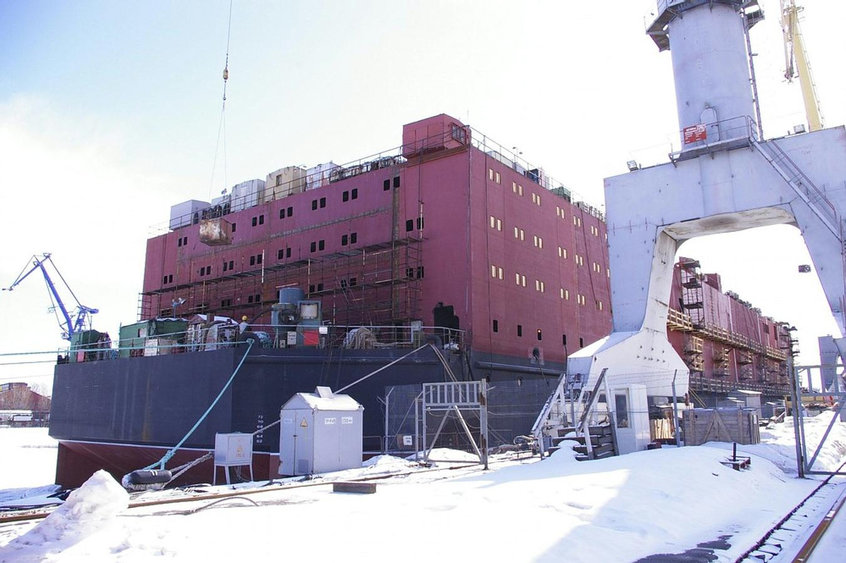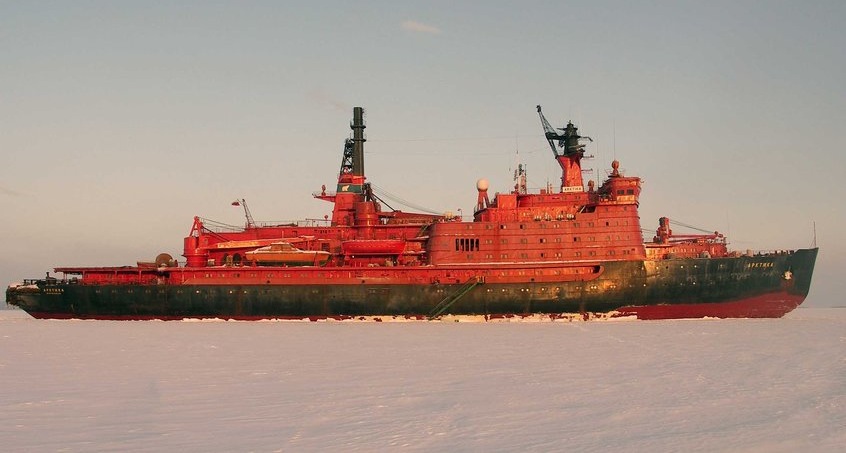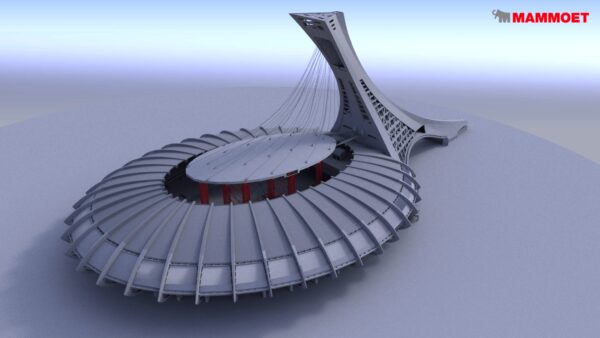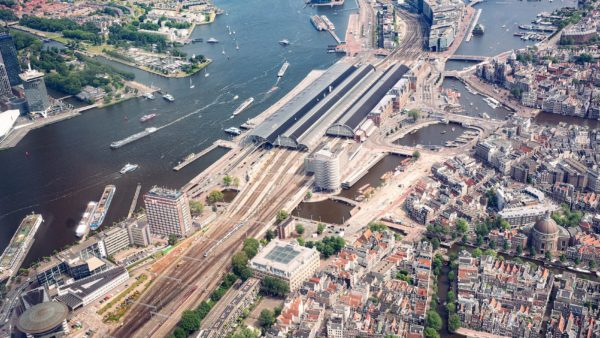Russia’s first floating nuclear power plant that can be tugged around the Arctic Ocean will be operational by October next year, according to Deputy Prime Minister Dmitry Rogozin.
Rogozin made the announcement yesterday in a speech to a group of Russian Arctic Youth students.Â
“It’s a nuclear reactor that can be connected to any onshore infrastructure, so that it powers any Arctic city via cable,” he said.
The floating reactors can power ports, industrial infrastructure and oil and gas platforms, and will help Arctic exploration, Rogozin said.Â
Rosatom, Russia’s state-owned atomic agency, says 15 countries, including China, Algeria, Indonesia, Malaysia and Argentina, have shown an interest in hiring floating nuclear plants for their own projects.
Small nuclear reactors have been installed for years in floating structures such as submarines, aircraft carriers and icebreakers.Â
These floating reactors are intended to be modular, mass produced units, and will be installed on barges that will be towed into position by tugs.

The Akademik Lomonosov under construction in the Baltiyskiy shipyard in St Petersburg (Source: Publicity image via Cryptome.org)
The prototype plant is the Akademik Lomonosov, which has been under construction in St Petersburg since 2007.Â
It will be 144m long and will be operated by a crew of 69 people. Its two reactors will be able to produce up to 70MW of electricity, enough to power about 22,000 households.
It’s designed to withstand a magnitude 10 earthquake, a tsunami tumbling it onto shore, and a 10-ton aircraft crashing into it, its developers have said.
The reactors are smaller than the two, 170MW reactors that power Russia’s Arktika-class icebreakers, from which they are derived.
Rogozin made his speech shortly after officiating at the launch of North Pole 2015, a floating scientific station staffed by Russian researchers that will drift around the Arctic Ocean.

The Arktika nuclear icebreaker before its decommissioning in 2008. The two reactors used in this class of ship have been adapted for the floating plants (Abarinov/Wikimedia Commons)
Global warming is leading to improved navigation in the Arctic Circle, and this in turn is leading to increased rivalry between those countries with territorial claims on its oil and gas deposits.Â
Unlike the Antarctic, which is governed by an international treaty that prohibits commercial or military exploitation, the Arctic is the subject of competing claims from Russia, the US, Canada and Denmark, among others.Â
Russia is engaging in a series of building projects along its northern coast, including 10 radar stations, 13 airfields, and a series of military bases.Â
In January Russia said it was considering setting up a ministry for Arctic development. The possibility of using floating nuclear reactors will fit into this programme.
Top image: Artist’s render of the completed Akademik Lomonosov
Comments
Comments are closed.











I have thought for a number of years that the UK’s answer to nuclear energy is the use of small reactors of the sort that are used in our aircraft carriers (or should that be in the singular) but sited in underground chambers designed to serve the needs of a local population such that when they reach the end of their useful life you simply deactivate them and “bury” them and replace them with another one or whatever other options have become available in the intervening period. Preferably they should be of the “molten salt” type for safety reasons.
Goodbye, oceans – we got a along swimmingly.
When there are so many natural and non-polluting ways to generate and store electrical energy- why do men choose those which are so very expensive and destructive of nature and of all of our health and well-being?!! For example: why did they replace those magnificent windmills in Holland with expensive diesel powered pumps which emit diesel exhaust fumes which only add to air pollution even when so many countries are now building wind farms to generate electricity to replace coal or diesel fired power stations?!!